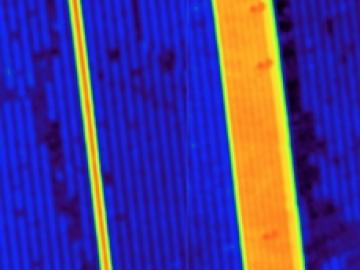
Artificial intelligence tools secure tomorrow’s electric grid

A clever signal noise reduction strategy developed by a team that includes Oak Ridge National Laboratory’s Ben Lawrie could dramatically improve brain imaging. By using quantum correlated beams of light, researchers reduced noise by 42 percent while doubling the signal in an optical magnetometer. ...




Individual atoms can make or break electronic properties in one of the world's smallest known conductors—quantum nanowires.


Data from DOE's Oak Ridge National Laboratory on neutron interactions with isotopes of platinum contradict a basic assumption underpinning random matrix theory, nuclear physics models and quantum chaos. For more than a half century, scientists have assumed that highly excited states ...


